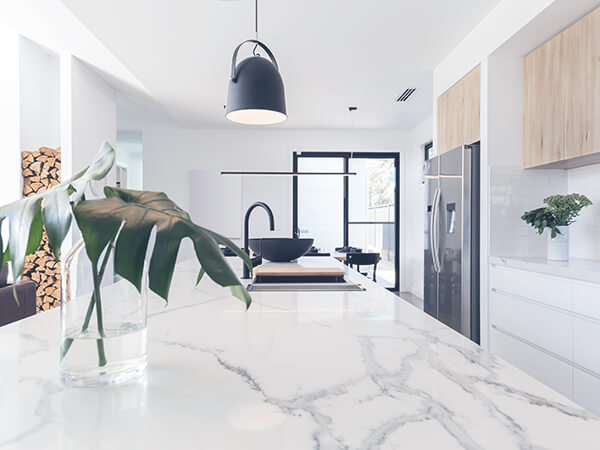September 24th, 2020
18 invaluable real estate and property management courses
Property Management
Property Management

If a picture tells a thousand words, a real estate video tells 25,000 every second.
There’s a reason why the social media giants like Facebook, Instagram, Tik Tok and LinkedIn have put an ever-sharper focus on video over the years. They’ve realised that in today’s attention economy no medium compares to video in terms of captivating the audience and sharing information efficiently and effectively.
The real estate industry has also had this lightbulb moment. Between video walkthroughs, spectacular drone shots and live-streamed auctions, video is quickly becoming the most important marketing weapon in a property professional’s arsenal. The trend is backed up by the data: according to a study by the Australian Real Estate Group, adding video to a listing increased enquiries by 403%. Does video help sell real estate? The answer is a resounding yes.
You know you need video. The more pressing question then, is how do you create and share it? To find out, let’s take a look at 12 top tips for property professionals who want to make the most out of the moving image.

Good real estate videos are planned in advance, not shot as an afterthought. Ask yourself: when, where and how will my video be used? What is its purpose? Who will be watching it? Two videos that seemingly have the same intent—to sell a property—can have vastly different audiences who will want vastly different content and will consume it in vastly different places.

Once you know the what, you’ll need to consider the how. How do I make good real estate content? What makes a good real estate marketing video? Here are a few of elements that tend to define the best:
How long should a ‘concise’ real estate video be? While it’s a difficult question to get hard data on, Brafton suggests that a good rule of thumb is two to six minutes. If the property is quite small and simple, lean more towards two. If the property is large and luxurious, lean more towards six.
“How do I make real estate marketing videos?” you might ask. Don’t worry—you aren’t expected to create the property equivalent of The Shawshank Redemption. In fact you can start quite simple, creating a video by animating still shots. Increase the degree of difficulty as your videography and editing skills develop.

Not wanting to spend thousands on camera equipment, drones and editing software, you might be asking “how do I make a real estate video on a budget?” Good news: you might already have all the hardware and software you need! Smartphone cameras are incredible pieces of equipment these days, and shooting a video from a simple, and perhaps even shaky, first-person perspective can even make a video feel more genuine. Don’t think (too much), just do.
Further to the above, if your video feels overproduced—a little too scripted and too well shot—the audience may not find it authentic, presuming that you’ve got a few actors to say what you want them to say. Create a script, sure, but splice it with off-the-cuff comments. Consider filming some vox pops from potential buyers at an open house.

The videos you produce are an extension of your brand. As such they should look and feel somewhat similar. Keep your branding consistent across all of your videos, and try to shoot with the same equipment and in a similar style. By doing this you’ll create a long-term relationship with your customers, and they’ll begin to be subconsciously drawn to your videos, as they know what to expect.
Another way to build your brand is by beginning a real estate video with the camera facing toward you, and offering up a quick introduction. According to Marketing Charts, 81% of consumers say brand trust is a deciding factor in a purchase decision. If people are more inclined to buy from those they trust, you need to be proactive in gaining that trust, and video is an effective way to do it.

If you’re creating a listing video, play the search engine optimisation (SEO) game by putting the property’s address in the title of the video and uploading it to (Google-owned) YouTube. When done well, this can result in your video being featured at the top of the search engine results page (SERP), allowing you to gain far more exposure than a simple listing on realestate.com.au ever would. Add your contact information in the video description so viewers can get in touch.
While video listings are a great place to start your real estate video journey, they shouldn’t be where it ends. There are a wealth of other real estate videos that can help you get your name out there.
Consider making a few of the following:

Real estate is an inherently local game. Make the most of this fact by including local references in your videos, making local jokes, and offering up local information. This can help a potential customer build up even more trust in you and your abilities.
And finally we come to the gauche yet unavoidable issue of money. How much should I charge for a real estate video? According to US-based Photography For Real Estate, professional real estate video production tends to cost between US$1000 and US$10,000 per finished minute, though a more simple in-house production should obviously cost less. To come to an appropriate price, consider factors like labour, professional assistance, equipment expense, music royalties and travel.
Video is the future, and this is a fact that a property professional can no longer afford to ignore. But by being open to the opportunity that the technology offers, and using the 12 tips above to take your first steps in the space, you’ll be putting yourself in a position to ride the video wave.
Thanks for reading this blog on our real estate video tips. You might also be interested in:
Let us know your thoughts on Creating Effective Real Estate Videos in 12 Easy Steps by emailing [email protected].